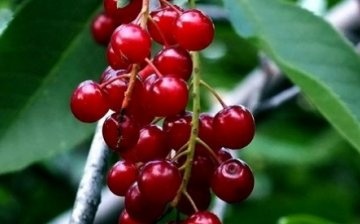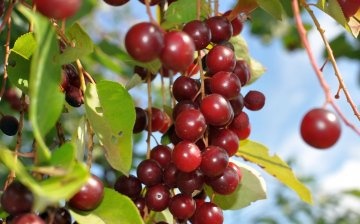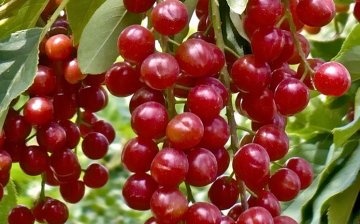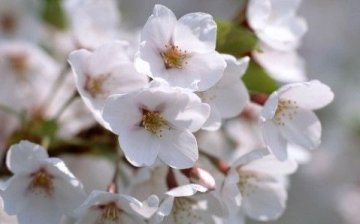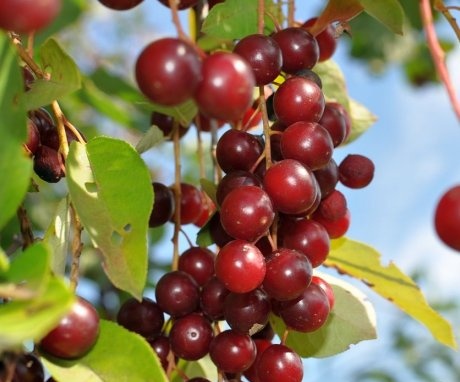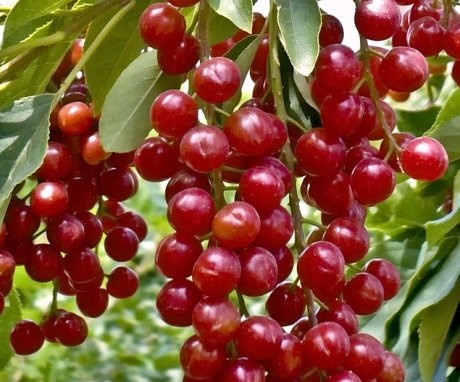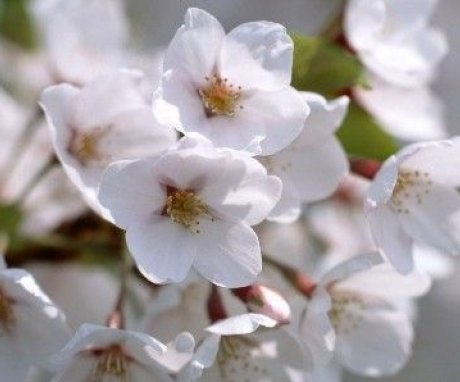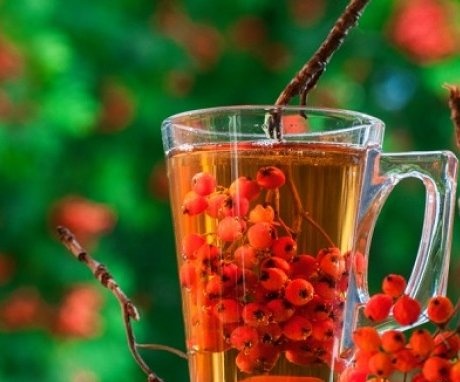Red bird cherry - features of cultivation, useful properties and application
Red bird cherry is also called Virginia... This is an unusually beautiful tree with tasty and healthy berries. For a gardener, this is a real find: the tree is very easy to care for, resistant to negative environmental factors, bears fruit well and for a long time, and red berries can be used both in cooking and in folk medicine. In addition, the red bird cherry is very decorative and will decorate any garden plot.
Content:
- Description and features of red bird cherry
- Reproduction methods
- Planting and care features
- Properties and application
Description and features of red bird cherry
Bird cherry Virginia native to North America. It is difficult to find it in our natural environment, more often it grows in gardens and vegetable gardens.
Red bird cherry is similar to a tree, but in culture it often grows in the form of a tall, branched shrub:
- In height, it can reach 7 meters.
- The leaves are dark green, slightly elongated, smooth.
- The flowers, as befits a bird cherry, are white, practically odorless, collected in brushes up to 15 cm long.
- Unlike the common bird cherry with black berries, the red bird cherry has dark red larger fruits. They have a more pleasant taste, not as tart as the common bird cherry.
The red bird cherry is also an ornamental plant. She is beautiful at any time of the year. During flowering it is covered with white flowers, like lace, red berries appear during fruiting, which hold even during frosts, and in autumn the foliage also turns reddish. In the middle lane, red bird cherry is less common due to its lower frost resistance. However, with proper care, it can survive the cold.
The most popular varieties of red bird cherry are Narym and Taiga, Rassvet, Samoplodnaya.
They differ in the height of the bush, color, size and taste of the fruit, as well as properties. Variety Narym and Taiga are relatively low shrubs, up to 4 m. They have dense foliage, bloom beautifully and luxuriantly, and then give medium-sized sweet and sour red fruits. Up to 5 kg of berries can be harvested from each tree, but they are planted in groups, since they are not pollinated individually.
Dawn is an early and low variety (up to 3 m). The fruits are not large, but appear regularly. The shrub bears fruit regularly. Although the berries are small in size, with proper care you can harvest up to 10 kg per bush.
Reproduction methods
Red bird cherry gives abundant growth, so the process breeding won't be time consuming. Among the breeding methods bird cherry the most popular are the following:
- Underwire. Propagation by bones is the longest and most laborious. A planted seed will not sprout soon, and such a tree will begin to bear fruit in the 7th year. The stone must be planted in the fall in prepared soil to a depth of no more than 5-6 cm.You can do this in the spring, but then the bones need to be prepared (stratify). To do this, the seeds are placed in the soil and placed in the refrigerator for a certain time to simulate the conditions of the winter dormant period. After that, they will grow better. The stratification period lasts 3-4 months.
- Cuttings... Bird cherry reproduces well with green cuttings.When the shoots stop growing, you need to cut several cuttings up to 15 cm long. The leaves from the cuttings must be removed, leaving only 2-3 pieces at the top. Ready cuttings should be soaked in water or a special solution that stimulates growth. The next day, they are planted in a special nutritious soil, deepening by 2-3 cm, covered with a film on top, creating greenhouse conditions. When the cuttings give good roots, they can be planted outdoors. The seedling will grow slowly at first. He needs to be fed mineral fertilizerswater regularly.
- Root shoots. Virginia bird cherry is rich in root growth, so this method of reproduction is also quite effective and simple. To do this, you need to separate part of the roots from the mother plant in the spring, and plant the most rooted ones in the fall.
- Layers. Reproduction by layering is somewhat more complicated and requires accuracy. In spring, holes are made around the mother plant with a depth of about 10 cm. Layers are dropped into these holes and fixed with wooden pegs. These layers need to be spilled regularly and feed... It is possible to separate the layers from the mother tree only in the fall, when they are sufficiently rooted. After a while, they can be seated in a permanent place.
Planting and care features
Red bird cherry is unpretentious in care. It is sufficiently resistant to frost, drought, and pests and disease. However, the maximum result can be achieved only by observing some simple rules for caring for red bird cherry:
- If already grown seedlings are being planted, you need to dig a fairly spacious hole in which all the roots will fit freely. In order for the tree to take root well, you need to put in this hole mineral fertilizers... You can also use organic, but in limited quantities.
- Watering the red bird cherry abundantly is necessary only after planting. If the tree has already grown stronger and has taken root, it is good enough to fill it 2-3 times during the growth period. It is necessary that the soil during glaze well saturated with water by about 20-30 cm.
- Most varieties of red bird cherry are cross-pollinated, so it is undesirable to plant bird cherry alone. The distance between the trees should be at least 2 m, as they grow. You can plant different varieties of bird cherry.
- After planting, the seedling must be cut by 50-60 cm, then the first branches will begin to grow lower, the bird cherry will be more luxuriant. As the main shoot grows, it is pruned annually to form a shrub.
- The soil around the bird cherry must be weeded, clearing it of weeds, and also loosen regularly so that the crust does not interfere with the oxygen saturation of the roots.
- Every spring bird cherry must be fed with mineral fertilizers. Right after feeding you need to loosen the soil by 50-60 cm, and not leave fertilizer on the surface.
- Red bird cherry needs to be pruned and form a crown... In this way, you can grow either a small tree or a branchy shrub. To make it easier to care and harvest, the height of the bird cherry must be regulated. The optimal height is 3 m. The lateral branches also need to be pruned so that the bird cherry spends more energy on the fruits, and not the foliage.
- Once every 3 years, organic fertilizers such as manure can be applied to a depth of 10 cm, but it is advisable not to overdo it.
Properties and application
Red bird cherry looks very beautiful in the garden. She can decorate parks and alleys. Red berries they hold well on branches and can hold out like this all winter, decorating the site even in the cold season.
In addition to the decorative use, bird cherry can be actively used in cooking.
Due to the fact that red berries are sweeter and more pleasant than ordinary black ones, they can be eaten fresh. They are rich in vitamin C, strengthen the immune system, help rejuvenate the body, and improve the functioning of the stomach and intestines.
However, you should be careful with fresh berries for those who suffer from gastritis with high acidity of gastric juice. From the fruits of red bird cherry, you can make bird cherry flour, fillings for pies, they are good to add to jams and compotes.
In folk medicine, fruits, branches, and leaves of red bird cherry are widely used:
- The berries contain a lot of tannins, which make them taste a little astringent. For this reason, the berries have a firming effect, useful for diarrhea, but undesirable for chronic constipation. However, bird cherry does not often lead to constipation, because, among other things, there is a lot of fiber in the fruits, which has a beneficial effect on intestinal motility.
- Also, the fruits and leaves of red bird cherry have a disinfecting effect. A decoction of leaves and berries has long been known for its antimicrobial action. Moreover, you can not only drink this broth, but also process the room in order to destroy microbes, drive away small insects.
- Bird cherry contains potassium and vitamin P, which help to strengthen the walls of the capillaries, improve the functioning of the cardiovascular system.
- The fruits of the red bird cherry also have a beneficial effect on the urinary system. They remove toxins from the body and have a diuretic effect. As a diuretic, you can use not only berries, but also buds, leaves, bark.
More information can be found in the video.



